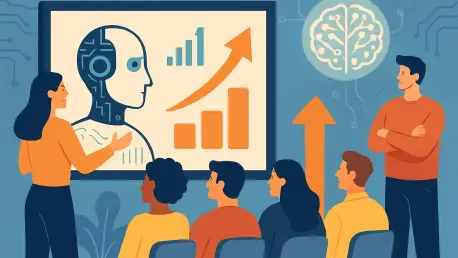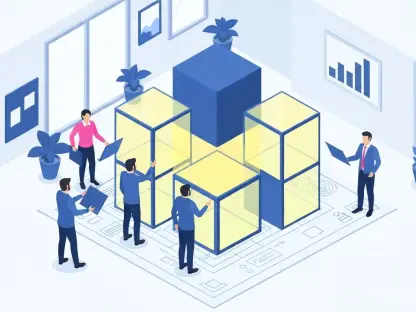Today, we’re thrilled to sit down with Chloe Maraina, a Business Intelligence expert with a deep passion for crafting compelling visual stories through big data analysis. With her sharp expertise in data science and a forward-thinking vision for data management and integration, Chloe brings a unique perspective on how organizations can navigate the complexities of digital and AI transformations. In this conversation, we dive into the critical role of culture in driving successful transformations, the pitfalls of neglecting people over technology, the power of customer-centric strategies, and the importance of empowering teams through learning and experimentation.
How does culture shape the success of digital and AI transformations in ways that technology alone cannot?
Culture is the backbone of any transformation, especially when it comes to something as complex as AI or digital initiatives. Technology can be cutting-edge, but if the people using it aren’t on board, it’s just a shiny tool gathering dust. Culture influences how employees perceive change—whether they see it as a threat or an opportunity. It drives trust, collaboration, and adaptability, which are essential for adopting new tools or workflows. For instance, a company with a culture of openness will encourage employees to voice concerns or ideas about AI systems, leading to better integration. Without that cultural foundation, even the best tech solutions can fail to deliver because people aren’t aligned or engaged.
Can you share a story of a transformation that stumbled due to cultural challenges, and what lessons stood out from that experience?
Absolutely. I once worked with a mid-sized firm rolling out a new AI-driven analytics platform. The tech was solid, but the leadership didn’t prioritize cultural alignment. Employees felt the tool was being forced on them without explanation of how it tied to their day-to-day work. There was no training, no dialogue, just an expectation to adapt overnight. Within months, adoption rates were dismal—people reverted to old methods because they didn’t trust the system or understand its value. The lesson was clear: ignoring culture creates resistance. You have to invest in communication and engagement to bridge that gap between tech and people.
What are some common missteps leaders make when they prioritize technology over people during these transformations?
One big misstep is assuming that deploying a new system is the finish line. Leaders often pour resources into tech—buying the best AI tools or platforms—while underestimating the human element. They might skip training or fail to explain why the change matters, leaving employees frustrated or skeptical. Another mistake is not addressing fears around job security, especially with AI, where automation can feel threatening. Without focusing on people, these initiatives lose traction because there’s no emotional or practical buy-in from the team.
How does a lack of trust among employees affect the rollout of new AI tools or processes?
Trust is everything. If employees don’t trust the data behind AI tools, the leadership pushing the change, or even the technology itself, they’ll resist using it. I’ve seen cases where teams doubted the accuracy of AI predictions because they weren’t involved in the process or didn’t understand how the models worked. That skepticism slows down adoption and can even lead to sabotage—like deliberately ignoring the tools. Building trust requires transparency, like explaining how AI decisions are made, and involving employees early so they feel part of the journey, not just pawns in it.
Why do transformations often lose momentum when they’re treated as isolated IT projects instead of company-wide efforts?
When transformations are boxed into IT, they lose relevance to the broader business. Employees outside the tech team might see it as someone else’s problem, not a shared goal. I’ve noticed this creates silos—IT pushes a solution, but sales or operations don’t see how it connects to their work. Without a company-wide lens, there’s no alignment on priorities, and the initiative feels like a burden rather than a value driver. Successful transformations need everyone to see their role in the change, which means framing it as a business strategy, not just a tech upgrade.
How does centering a transformation strategy around customer needs build resilience and agility in an organization?
Focusing on customers keeps everyone grounded in a common purpose. When a transformation is tied to delivering better experiences or solving real customer pain points, it creates a north star that cuts through internal politics or competing agendas. It also builds agility because customer needs evolve, forcing teams to adapt quickly rather than stick to rigid plans. I’ve seen companies pivot faster during disruptions because their customer-first mindset made them more responsive to market shifts. It’s a unifying force that keeps the transformation relevant and impactful.
What practical steps can leaders take to ensure customer priorities guide decision-making across all departments?
Leaders need to weave customer centricity into the fabric of their operations. Start by revisiting mission statements and incentives—make sure they reflect a customer focus. Then, create mechanisms like cross-functional teams or regular feedback loops where customer insights are shared and acted on. I’ve seen success when companies appoint roles like business relationship managers to bridge gaps between departments, ensuring everyone understands how their decisions impact the customer. It’s also about storytelling—constantly reinforcing why each change matters to the end user.
Why is investing in employee learning and development so critical during digital and AI transformations?
Transformations often demand new skills—whether it’s understanding AI outputs or navigating updated systems. Without learning and development, employees feel overwhelmed or left behind, which breeds disengagement. Investing in training shows you value your people and equips them to handle change confidently. It’s not just about technical skills; it’s also about fostering a growth mindset so they’re ready to evolve with the organization. I’ve seen L&D programs turn skeptics into champions because they feel supported rather than sidelined.
How can companies strike a balance between providing training and maintaining productivity in daily operations?
It’s a challenge, but it’s doable with intentional planning. Companies can carve out protected time for learning—say, a few hours a week—without disrupting core work. Microlearning, like short online modules, can fit into busy schedules. Another approach is integrating training into real projects, so employees learn by doing. I’ve also seen firms pair learning with mentorship, where experienced staff guide others on the job. The key is to treat learning as a priority, not an afterthought, and communicate that it’s okay to take time for growth.
How does empowering teams to make decisions independently accelerate the pace of a transformation?
When teams are empowered, decisions happen closer to the problem, cutting through layers of bureaucracy. This speeds up execution because you’re not waiting for approvals from the top for every move. I’ve seen empowered teams innovate faster—they spot issues or opportunities in real time and act on them. It also boosts accountability; when people own their choices, they’re more invested in the outcome. For transformations, this agility is crucial because the landscape—especially with AI—changes so quickly.
What hurdles do leaders often face when moving away from a top-down decision-making approach?
Shifting from top-down to distributed decision-making can be tough. Leaders might worry about losing control or fear that teams aren’t ready to handle big calls. There’s also the risk of inconsistency if guardrails aren’t clear—different teams might pull in opposite directions. I’ve noticed some leaders struggle with trust; they second-guess team decisions, which undermines the whole effort. It takes a mindset shift to let go and accept that mistakes are part of the learning curve. Building that confidence in teams is a gradual process.
Why is fostering a test-and-learn mindset so important for driving innovation during transformations?
Transformations, especially with AI, are rarely linear. A test-and-learn mindset lets teams experiment without fear of failure, which is key to uncovering what works. It builds resilience—when something doesn’t pan out, you learn and pivot instead of stalling. I’ve seen companies innovate faster by creating space for small-scale pilots before full rollouts. This approach also keeps teams curious and collaborative, as they’re constantly sharing lessons. Without it, organizations risk sticking to outdated plans and missing out on breakthroughs.
What is your forecast for the role of culture in shaping the future of AI and digital transformations?
I believe culture will become even more pivotal as AI and digital tools evolve. We’re moving into an era where technology will change faster than ever, and the human element—trust, adaptability, collaboration—will be the differentiator. Companies that embed a people-first culture will not only keep up but lead the pack, because they’ll have engaged teams ready to embrace the unknown. Those who ignore culture will struggle with resistance and missed opportunities. My forecast is that cultural alignment will be seen as a strategic asset, just as critical as any algorithm or platform.









